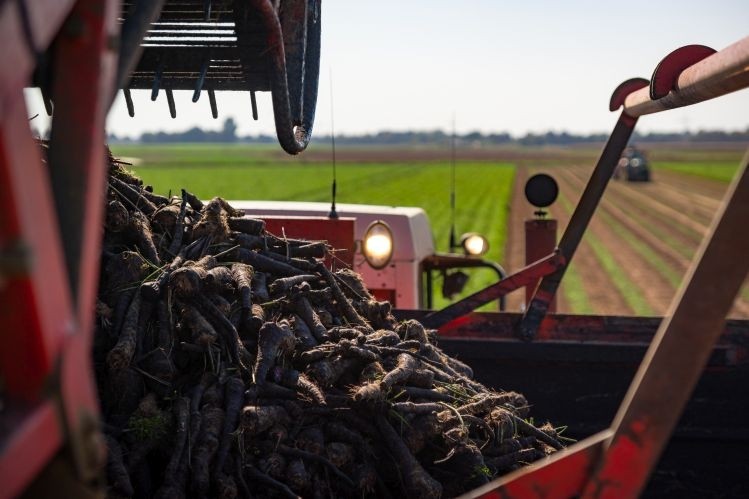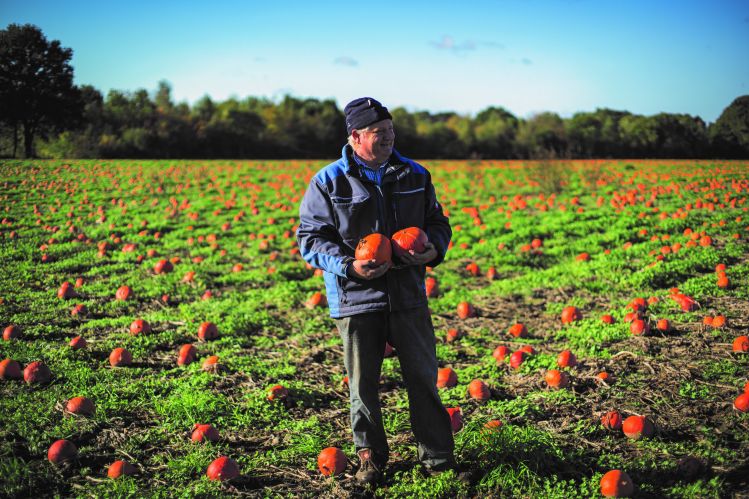Talking sustainability and food colors with GNT: ‘Of course, natural does not automatically mean sustainable…’

As part of our November special edition on flavors and colors, FoodNavigator-USA caught up with de Kort to explore what GNT - best known for its EXBERRY Coloring Foods, which are processed without organic solvents - is doing to reduce its water and energy use and meet sustainability goals.
BREEDING FOR COLOR INTENSITY
According to de Kort, GNT has been working on increasing yields and color intensity of key crops such as black carrots, which in simple terms means it can produce more color with less land and fewer inputs.
“Between 1995 and 2020, we were able to increase our black carrot yields by more than 100% in terms of metric tons per hectare through improvements in our farming methods," revealed de Kort. "Our team of agronomists also intensively screen all potential varieties to guarantee the most efficient and reliable options for our manufacturing requirements. This has resulted in an increase in color intensity per metric ton of 150% over the same timeframe. Overall, this allowed us to achieve a 300% improvement in color intensity per hectare over that 25-year period up to 2020.”
He added: “One of our key targets for 2030 is to increase the color intensity of our main crops by 30% compared to 2020 levels. The crops include carrots, radishes, sweet potatoes, and more, and represent over 80% of the total volume of our raw materials. We’re measuring our progress on this KPI after each crop season by recording yields in metric tons per hectare and extractable color per metric ton.”
But as with anything that involves Mother Nature, variations in weather or other factors beyond your control can influence metrics year to year, he acknowledged. “Our color intensity figures for 2021 were influenced by the large amount of rain during the European growing season, which increased mass yields but had a negative impact on color content due to a dilution effect.
“Overall, this meant a 29% increase in total color yield compared to 2020. This year, by contrast, we’ve seen very hot and dry conditions, so that creates an additional challenge.”
FILTRATION TO REDUCE MOISTURE CONTENT IN CONCENTRATES
Producing natural ingredients can be fairly energy intensive as it generally involves reducing water content, explained de Kort. But GNT is reducing its energy bills and associated GHG emissions.
“We gently process our raw materials into concentrates using physical methods and water. Evaporation is a crucial part of this process for the majority of our products. In many cases, we use evaporation to increase the dry matter content from 10% to 70% across two stages. Boiling the water for evaporation uses a significant amount of energy, so this has been a major focus of our sustainability efforts.
“We’ve always relied on gas to generate heat and steam. We’re now embarking on an important project to electrify the process. We’re introducing new technologies such as industrial heat pumps and also exploring ways to use residual heat streams.”
He added: “Filtration is another important part of our strategy. Prior to evaporation, we use ultrafiltration to increase the solid content from around 5% to 10%. By using new filtration processes to increase the solid content further, we need less evaporation and can cut down our energy use. In 2021, for example, we achieved a 17% improvement in energy use in our spirulina process through a new filter installation.”
VALORIZING SIDE-STREAMS:
GNT’s carrots have potential for further use across a range of food and drink products, said de Kort.
“If a company were making a carrot juice drink, they would take the carrots, crush them, and make a solid-liquid separation. After this, they would use the liquid part for their beverage and the solids would be left as a side stream.
“At GNT, what we do as an additional step is microfiltration. This creates two streams: one with the color and another with the sugars, proteins, and so on. When we filter our carrot concentrates, we’re left with a separate liquid stream that is comparable to molasses, although the composition is different. We’re now exploring ways to valorize that substance [this is not connected to EXBERRY caramelized carrot concentrate, which has been on the market for several years, he explained].
“The fiber and other micronutrients in carrots could also be used in food and drink products and we’re looking into various potential options."
He added: “Our range of raw materials covers more than 30 fruits, vegetables, and plants. Some have qualities that mean their side streams could be used to deliver both color and flavor to products such as curry sauces, for example. Others have qualities that make them well suited to certain requirements in the production of extruded meat analogs.
“Due to commercial confidentiality, we’re not yet able to disclose any further details about our plans at this stage. This includes information about the new ingredient we plan to launch at the end of next year.”
MEASURING AND REPORTING SUSTAINABILITY ACCURATELY AND RESPONSIBLY
As some speakers in our recent Futureproofing the Food System virtual summit recently observed, collecting scope three emissions data (which the GHG Protocol Corporate Standard classifies as indirect emissions not included in scope 2 that occur in the value chain of the reporting company, including both upstream and downstream emissions), is particularly challenging in the food supply chain.
“Here, we work with real data if we can collect it, mainly on transportation, as we know where the goods are coming from,” said de Kort. “But otherwise we have to fall back on models and standardized data from databases.”
He added: “It’s an ongoing process. We have the ambition to become better in this field and work directly with farmers to collect data. And we have also worked with a third party consultancy to do studies into a few raw materials and we want to expand this. But some scientific databases are actually quite reliable. Take black carrots, which we use a lot. If you take them from Germany or from the Netherlands, there’s not a significant difference [in terms of emissions], so you can accept an average value.
“What is more interesting is to ask what are the main drivers of the carbon footprint of black carrots and then talk with farmers about how we can lower the footprint. Gathering all the data is one thing, but in the end, the aim is to lower the footprint.”
TRANSLATING ENVIRONMENTAL DATA INTO ACTIONABLE INFORMATION FOR INDUSTRY STAKEHOLDERS AND END CONSUMERS
Asked what CPG companies are now expecting from their suppliers, sustainability is table stakes, he said: "But in terms of the data needs, that differs a little bit. It’s also the case that the dosage of coloring foods in a finished product is not huge [a little bit goes a long way], so we don’t face the same level of scrutiny [as some other ingredient suppliers] yet.
“But nevertheless, I think it's important for our customers to know that we are working on lowering the footprints.”
He added: “I think in the sustainability field in general, there's quite a lot of [third party] certification schemes and we are looking at these as we believe it shouldn't only be the company itself that says, look how green we are.
“So what we want to do now is to at least have our corporate carbon footprint certified against an ISO standard and third party verified.”
The challenge, he said, is translating all of this data into actionable information for stakeholders across the supply chain, from procurement teams in CPG companies, to end consumers, so that they can make informed choices.
“In the EU, they look at 16 different impact categories and then say oh, that should be easy and understandable to see in one glance, front of pack, what is the environmental impact? There’s CO2 biodiversity, water usage, animal care…
“But what does it mean to the end consumer? That's a very difficult question.”
*Read GNT’s sustainability report HERE.






